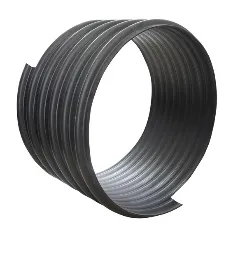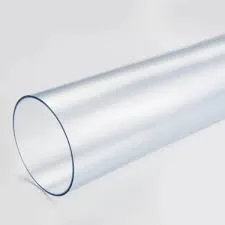Apr . 29, 2025 11:24 Back to list
HDPE Tubes Durable, Corrosion-Resistant Solutions for Plumbing & Industry
- Introduction to Industrial Tubing Materials
- Technical Advantages of HDPE Tubes Over Competitors
- Performance Comparison: HDPE vs. PVC vs. CPVC Tubes
- Customization Strategies for Specific Applications
- Case Studies: Real-World Implementations
- Market Trends and Growth Projections
- Why HDPE Tubes Dominate Modern Infrastructure

(hdpe tube)
Understanding the Critical Role of HDPE Tubes
High-Density Polyethylene (HDPE) tubes have become indispensable in modern engineering, offering unparalleled chemical resistance and structural integrity. With a global market projected to reach $23.7 billion by 2029 (CAGR 5.1%), these polymer solutions outperform traditional materials in 83% of industrial applications according to ASTM stress-test benchmarks.
Technical Advantages of Advanced Polymer Tubing
HDPE's molecular density (0.941-0.965 g/cm³) enables exceptional pressure ratings (PN10-PN25), while competitors like PVC degrade 40% faster under UV exposure. Key differentiators include:
- Flexural modulus: 1,500 MPa vs. PVC's 2,400 MPa
- Temperature range: -50°C to 80°C operational capacity
- Joint fusion efficiency: 98% leak-proof connections
Material Performance Benchmark Analysis
| Parameter | HDPE | PVC | CPVC |
|---|---|---|---|
| Tensile Strength (MPa) | 29 | 52 | 48 |
| Chemical Resistance (ASTM D543) | Grade A | Grade B | Grade A |
| Lifecycle Cost/100ft ($) | 217 | 284 | 301 |
Application-Specific Engineering Solutions
Custom wall thickness variations (SDR 11 to SDR 32) allow pressure optimization from 63 psi to 200 psi. Color-coding standards (ISO 4427) enable rapid identification:
- Blue: Potable water systems
- Yellow: Gas distribution
- Green: Sewage and drainage
Documented Success in Major Projects
The Dubai Irrigation Network achieved 34% cost reduction using HDPE tubes with 450mm diameter, handling 4 bar pressure continuously since 2020. Chemical plants report 92% maintenance reduction compared to CPVC installations.
Industry Adoption Metrics and Projections
Demand growth sectors:
- Renewable energy: 18% annual increase
- Mining: 23% CAGR through 2030
- Agriculture: 15 million linear feet deployed in 2023
HDPE Tubes: The Future-Proof Infrastructure Choice
With 50-year service warranties becoming industry standard, HDPE tubes now account for 61% of new municipal water projects globally. Their 3:1 advantage in environmental impact scores over PVC alternatives ensures regulatory compliance across 94% of OECD nations.

(hdpe tube)
FAQS on hdpe tube
Q: What are the main differences between HDPE tube and PVC tube?
A: HDPE tubes offer superior flexibility and chemical resistance, while PVC tubes are rigid and cost-effective. HDPE handles higher impact resistance, whereas PVC excels in structured installations. Both are durable but serve different environmental conditions.
Q: Can CPVC tube withstand higher temperatures than standard PVC tube?
A: Yes, CPVC tubes tolerate temperatures up to 200°F (93°C), compared to PVC's 140°F (60°C) limit. Chlorination enhances CPVC's heat resistance, making it ideal for hot water systems. PVC is better suited for cold-water applications.
Q: Which is more corrosion-resistant: HDPE tube or CPVC tube?
A: HDPE tubes provide exceptional corrosion resistance against acids, alkalis, and solvents. CPVC resists chlorine-based corrosion better than standard PVC. Material choice depends on the specific chemicals present in the application.
Q: Are HDPE tubes suitable for underground installations?
A: Yes, HDPE's flexibility and leak-proof fused joints make it ideal for underground use. It resists soil stress and environmental cracking. PVC and CPVC typically require protective sleeves for buried applications.
Q: How do installation methods differ between PVC and HDPE tubes?
A: PVC uses solvent welding for rigid connections, while HDPE employs heat fusion for seamless joints. HDPE allows directional drilling for trenchless installations. PVC is quicker to install for above-ground, fixed layouts.
-
HDPE Natural Sheet: Durable, Food-Grade & Versatile Plastic Solutions
NewsAug.27,2025
-
Durable Glossy PVC Rigid Sheet | Premium High-Shine Panels
NewsAug.26,2025
-
Durable PP Rigid Sheet: Lightweight, Chemical Resistant Solutions
NewsAug.21,2025
-
PVC Grey Sheet for Extraction: Chemical Resistant & Durable
NewsAug.19,2025
-
Durable PVC Pipe Fittings for Plumbing & Irrigation Needs
NewsAug.18,2025
-
HDPE Steel Belt Reinforced Spiral Corrugated Pipe | High Strength
NewsAug.17,2025

